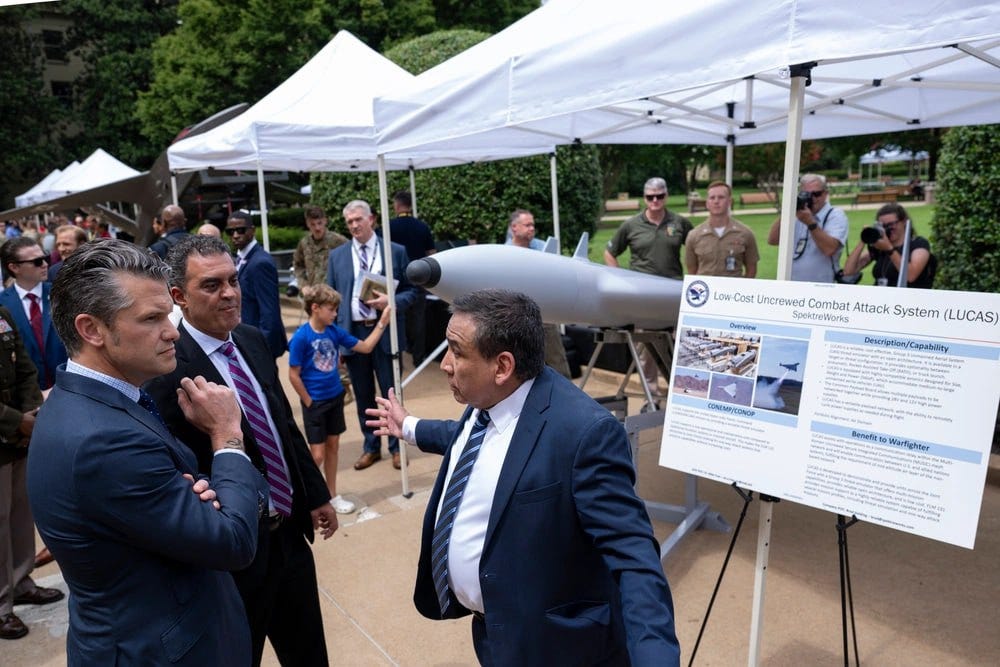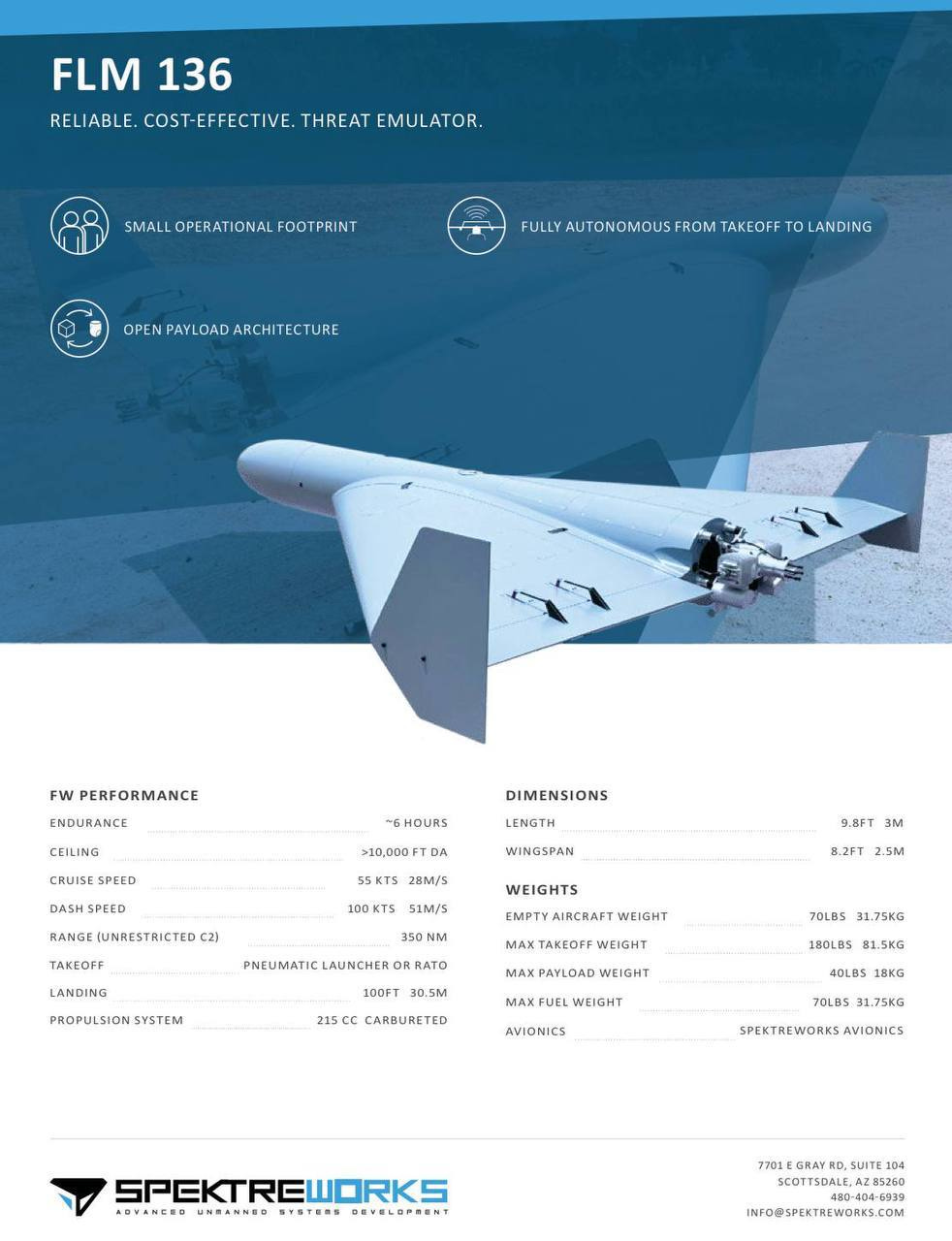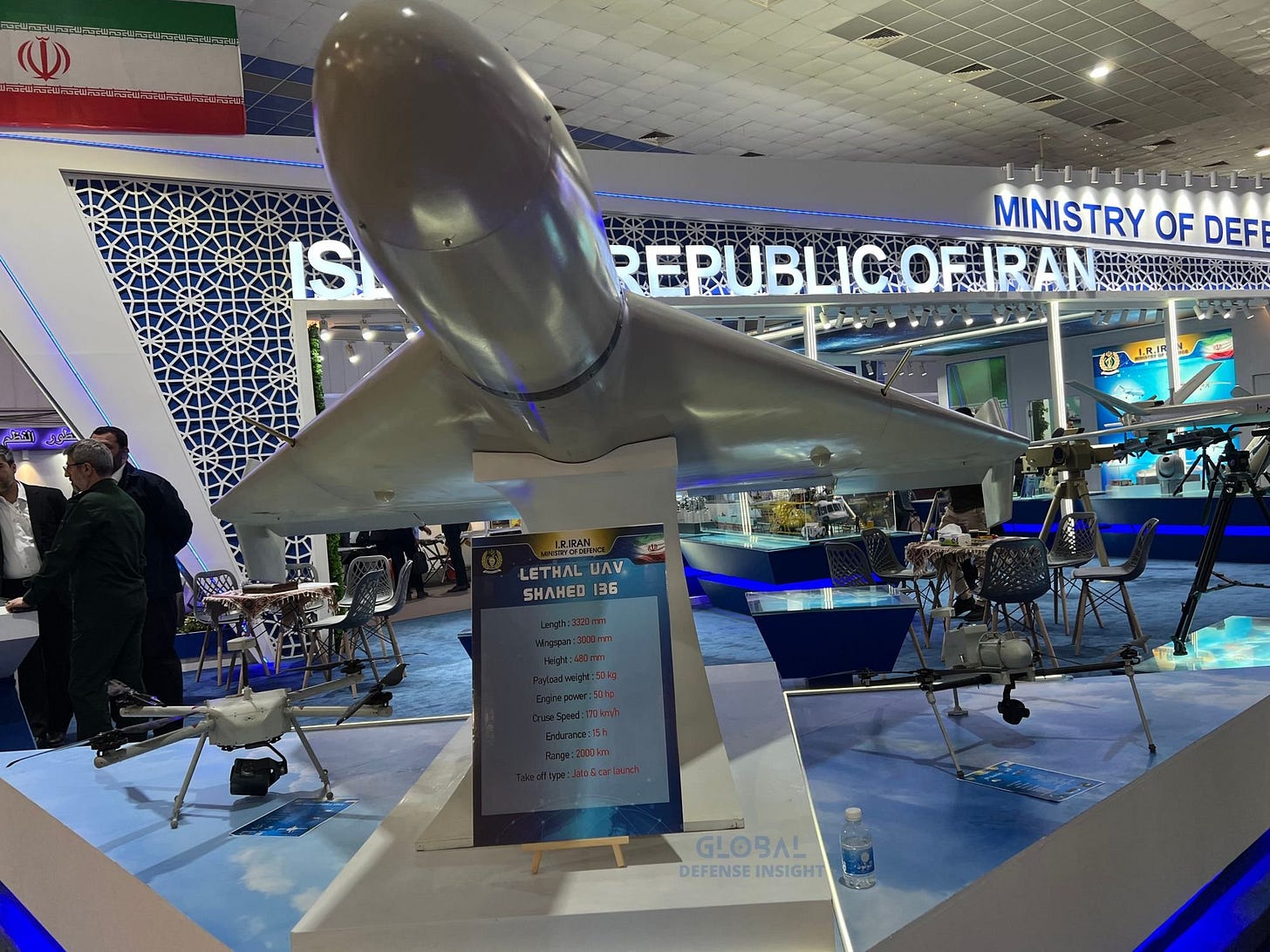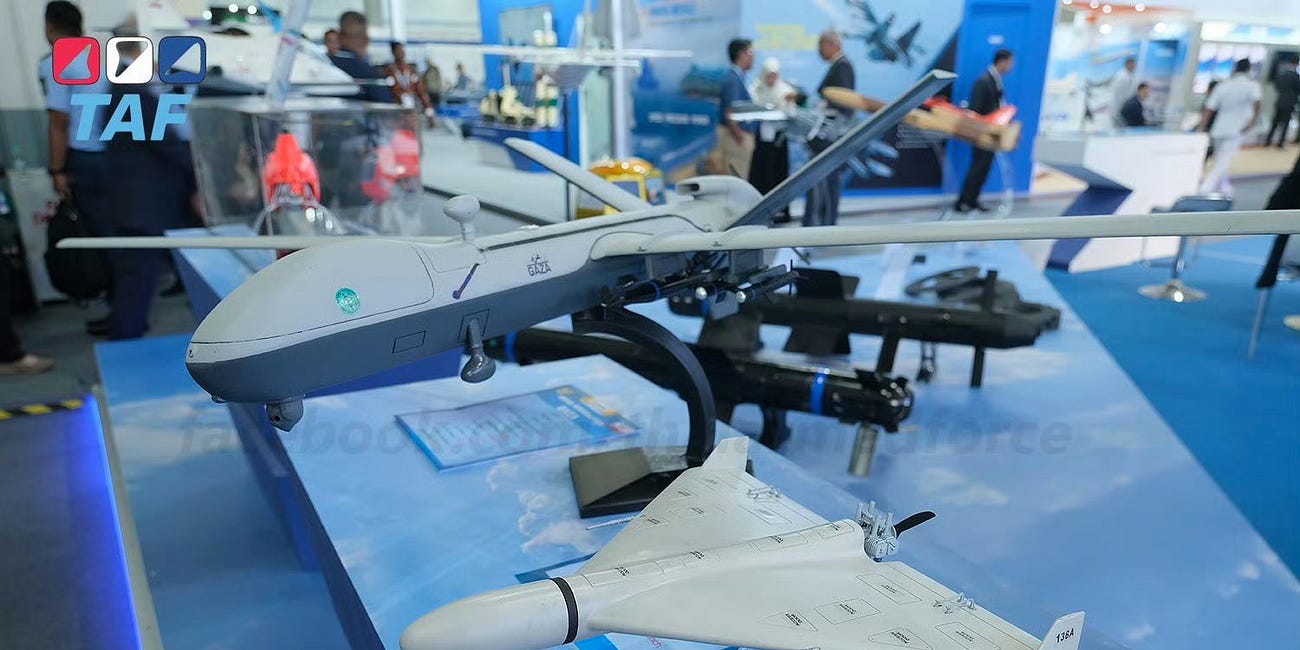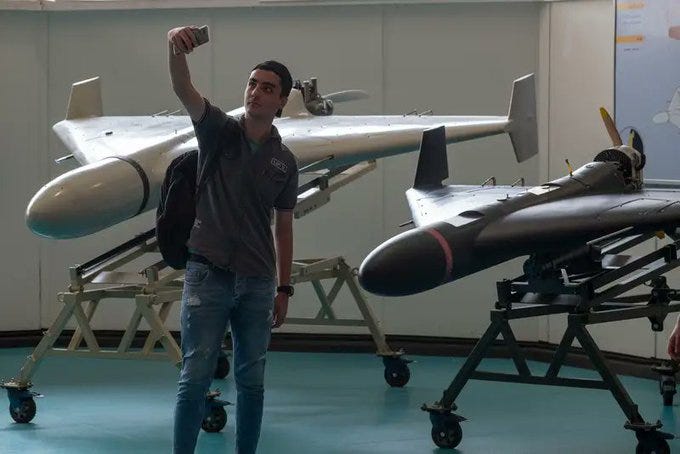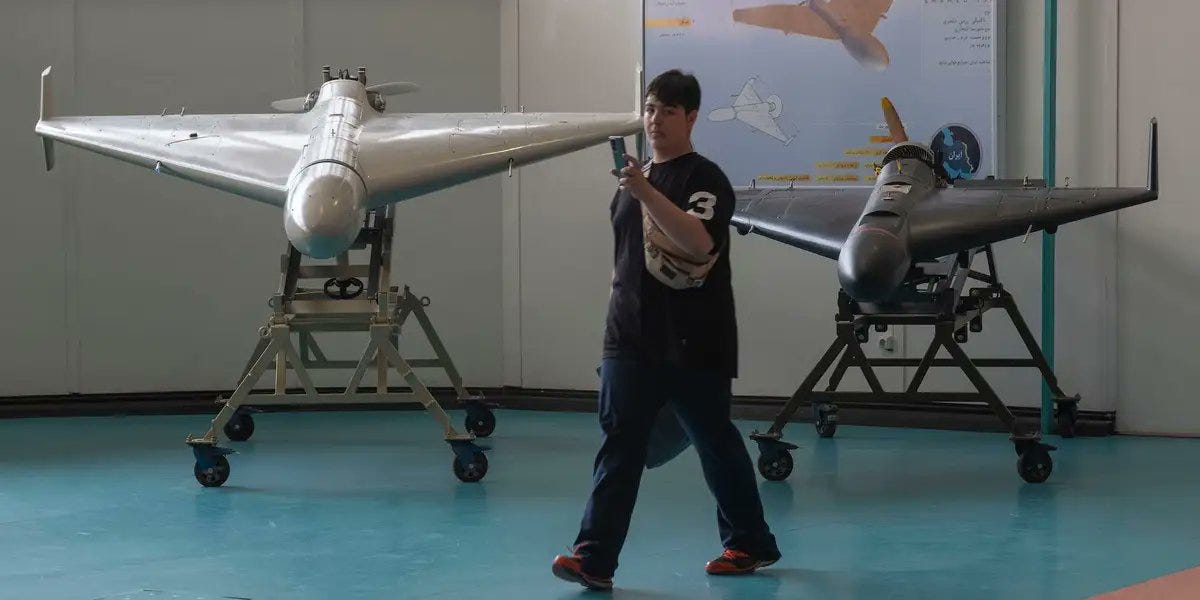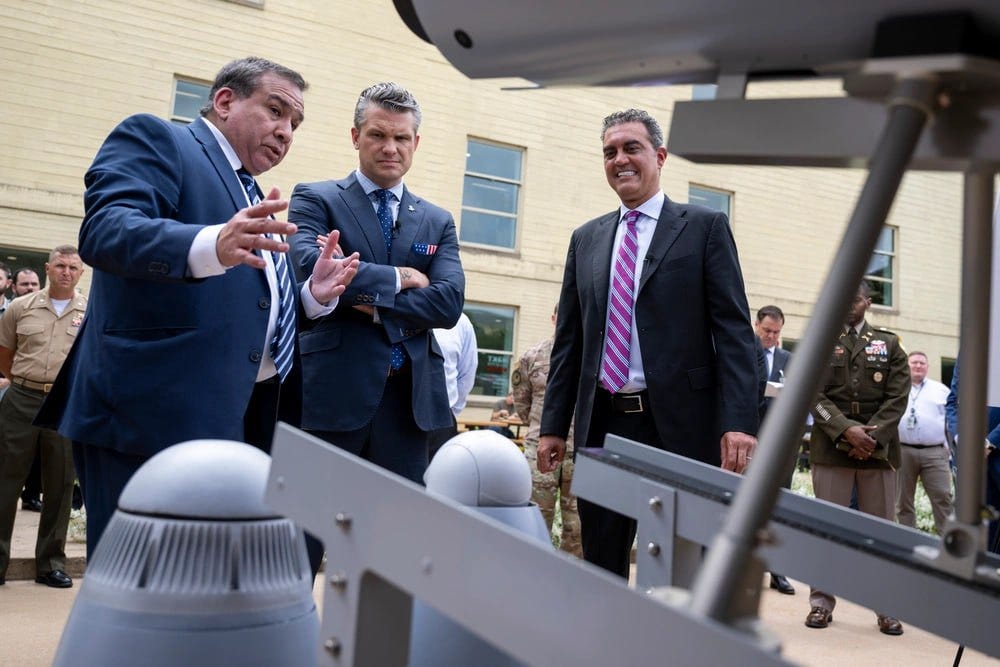SpektreWorks Displays the LUCAS, An American Analogue To The Shahed-131 Strike Drone
🇺🇸 The U.S. Military May Come to Deploy Its Own Long-Range Strike Drones
An American company, SpektreWorks, has unveiled its Low-Cost Combat Attack System (LUCAS) single-use propeller-driven strike drone design, which has been characterized as an American analogue to the Iranian Shahed-136. While there is no question that the American LUCAS design borrows very heavily from the original Iranian cropped delta wing propeller-driven strike drone design, which has become well-known internationally following its use by Russia under the designation Geran-2 (as well as the related wholly Russian-built Garpiya), the LUCAS may be best characterized as an analogue to the smaller, lighter, and shorter-range Iranian Shahed-131, which forms the basis for the better-known Shahed-136.
The LUCAS appears to be a rebranded FLM 136 design that was previously associated with and publicized by SpektreWorks. The publicly available specification sheet for the FLM 136 indicates that it is a much smaller and shorter-range design than the Shahed-136, which is in line with the FLM 136's advertised role as a "threat emulator" intended to support air defence training exercises.
Iran displayed an official specification sheet alongside a Shahed-136 specimen at the IQDEX 2025 military industrial exhibition, which was held in Baghdad in April 2025.
🇮🇷 Iran Offers The "Shahed-136A" To Prospective Customers At LIMA 2025 Exhibition in Malaysia
The Iranian exhibit at the LIMA 2025 (20-24 May 2025) military industrial exhibition in Malaysia notably included a subscale model of the Shahed-136 single-use propeller-driven strike drone. With the Iranian display at the earlier IQDEX 2025 exhibition in Iraq having featured a full-scale
According to the publicly available specifications sheet, the American SpektreWorks FLM 136 has a nominal maximum range of ~650 kilometers (subject to the standard caveats about the maximum range of any aircraft and munition design) and a maximum take-off weight of just 81.5 kilograms when equipped with a maximum payload of just 18 kilograms. According to the publicly available specifications sheet, the Iranian Shahed-136 is advertised as having a nominal maximum range (subject to the standard caveats about the maximum range of any aircraft and munition design) of 2000 kilometers. The baseline Shahed-136 is a much larger strike drone design equipped with a 50 kilogram-class warhead. As with many aircraft and munition designs, there is some scope to trade range for payload, which enables a reduced range version of the Shahed-136—reportedly designated Shahed-136C in Iranian service—that is equipped with a substantially heavier 90 kilogram-class warhead. A 90-kilogram class warhead approximates the maximum take-off weight of a fully loaded and fuelled SpektreWorks FLM 136. Simply stated, insofar as the LUCAS is a rebranded FLM 136, the SpektreWorks strike drone design is in an entirely different weight and capability class than the Shahed-136, even as the American strike drone design borrows very heavily from the Iranian original.
The Iranian Shahed-136 is itself an enlarged and extended-range version of the original Shahed-131, to which the American FLM 136 is a much closer analogue. The Shahed-131 was unofficially unveiled in 2014 and only became a high-profile Iranian strike munition following its use against Saudi hydrocarbon facilities in September 2019 alongside Paveh land-attack cruise missiles.
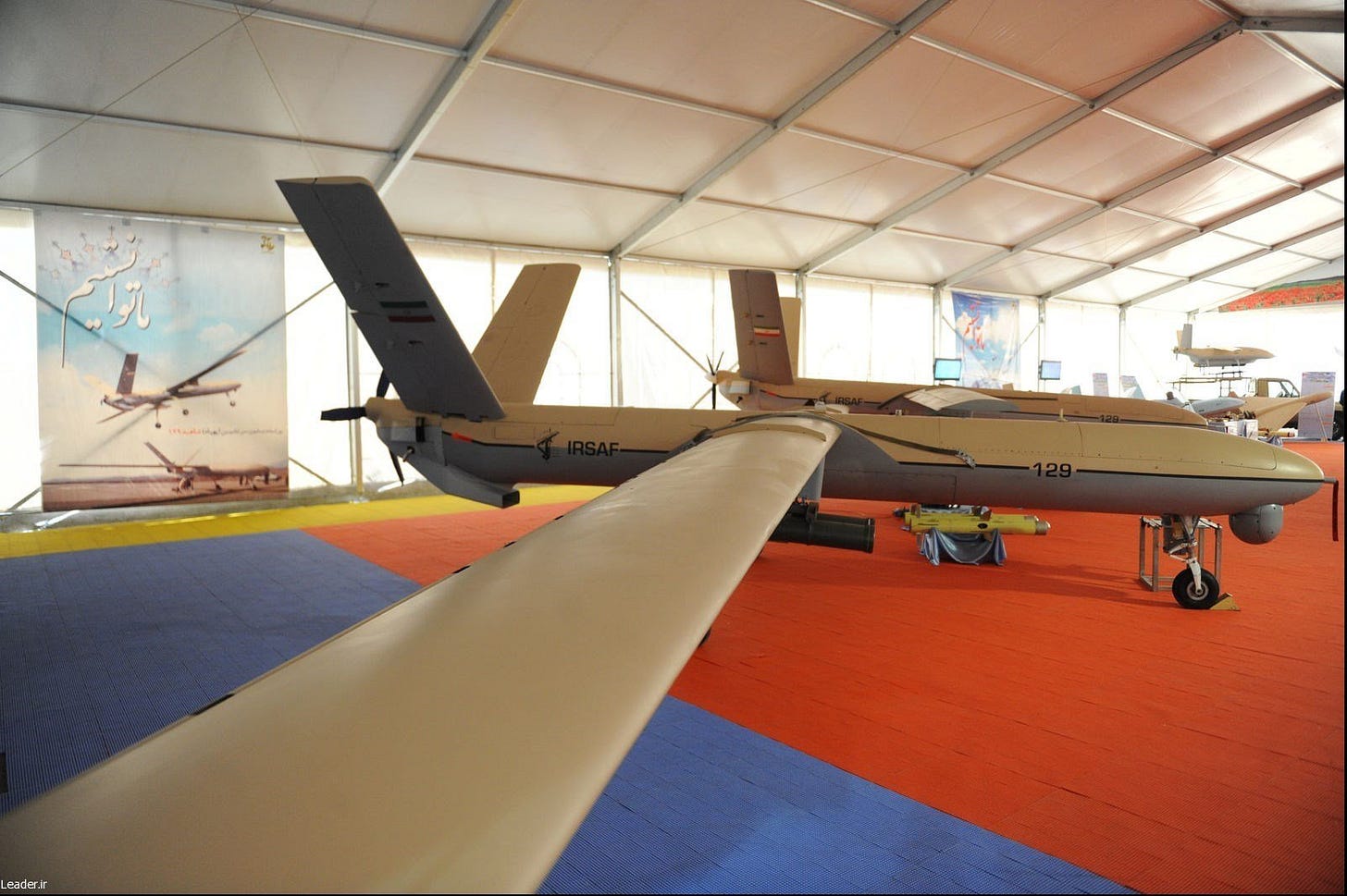
Assuming that it has not done so already, SpektreWorks may follow the Iranian lead in developing an enlarged and extended-range version of the FLM 136 that is a much closer analogue to the Shahed-136. It is worth pointing out that the Shahed-131 and Shahed-136 are most readily distinguished by different wing stabilizer designs, which extend only upward on Shahed-131 but extend both upward and downward on the larger Shahed-136. The SpektreWorks FLM 136 design seen in marketing materials and the SpektreWorks LUCAS specimens on display in the United States all feature Shahed-136 style wing stabilizers that extend both upward and downward. It is possible that this reflects SpektreWorks’ self-described efforts toward developing a "threat emulator" intended to support air defence training exercises, for which a high fidelity visual signature is very desirable. Nevertheless, Iran did not require any particular breakthrough to enlarge the Shahed-131 design into the Shahed-136 and SpektreWorks, among others, emulating these proven Iranian strike drone designs, is unlikely to encounter major hurdles should it attempt to develop a larger, higher-payload design that is a closer analogue to the Shahed-136.
While the SpektreWorks design(s) borrow very heavily from the Iranian original, the LUCAS specimens recently on public display are not mere copies of the Shahed-131 and Shahed-136. Among other things, the build quality appears to be much higher on the SpektreWorks products, and the FLM 136 has a very low claimed empty weight of just 31.75 kilograms. For Iran, the Shahed-131 and Shahed-136 are expendable and low-cost single-use munitions, and Iran’s military industry is not as well-positioned as the American aerospace industry to manufacture at a higher build quality. When coupled with Iran’s greatly inferior state finances, Iran faces strong structural incentives to design and build systems to the lowest possible build quality at which the end product remains satisfactorily effective and viable for its intended purposes. It is worth noting that Russia has adapted the design of the Shahed-136/Geran-2 to not only make it more suitable for its military needs but also for mass manufacturing, which Russian sources claim the original Shahed-136 design was not optimized toward. SpektreWorks is likely approaching the Shahed-131 and Shahed-136 designs from yet another direction that both Iran and Russia will likely pay attention to.
Whereas the FLM 136 “threat emulator” does not feature any discernible sensor in its baseline configuration, the SpektreWorks LUCAS features a modular payload section that seemingly enables operators to swap sensor payloads and perhaps warheads as needed. This is not an approach that either Iran or Russia appear to have so far pursued. Iran’s publicly known sensor-equipped versions of the Shahed-136, Shahed-238, and similar appear to be factory-built non-interchangeable specimens. It remains to be seen whether Iran will itself emulate what SpektreWorks has done with the “DNA” of Shahed Aviation Industries’ family of cropped delta wing single-use propeller-driven strike drone designs going forward.


